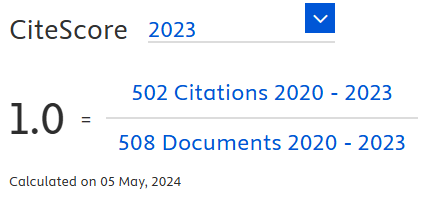In-vitro screening of bio-potency of Cocos nucifera haustorium and its efficacy against HepG2 cell line
DOI:
https://doi.org/10.18006/2025.13(2).151.162Keywords:
Cocos nucifera, Haustorium, Anti-inflammatory, Antioxidant, Anticancer, TherapeuticAbstract
Cocos nucifera (coconut) has been extensively studied for its nutraceutical and medicinal properties, but research on the haustorium of C. nucifera is limited. This study aimed to analyze the antioxidative, antimicrobial, anti-inflammatory, and anticancer properties of the C. nucifera haustorium. Antimicrobial studies were conducted using a well diffusion technique, while antioxidative assays included DPPH, ABTS, and H2O2 tests. Anti-inflammatory effects were assessed using the egg albumin denaturation and HRBC assays, and the anticancer activity was evaluated with the MTT assay. Among the tested bacterial strains, the maximum inhibition zones were 13.33 ± 0.58 mm for E. coli and 12.67 ± 0.58 mm for S. aureus at a 100 µg/mL concentration. Regarding antifungal activity, the haustorium extract demonstrated minimal effect against Candida albicans. The antioxidative activity was notable, with DPPH showing 74.74 ± 1.05%, ABTS at 78.45 ± 0.86%, and hydrogen peroxide at 71.64 ± 0.68%, all at a concentration of 50 µg/mL. The anti-inflammatory effects were assessed through the egg albumin denaturation assay, which showed an activity of 72.68 ± 0.87%, and the HRBC assay, which demonstrated 83.93 ± 0.90%. These results were comparable to the standard Diclofenac sodium, which showed 81.33 ± 0.95% inhibition in the egg albumin denaturation assay and 88.3 ± 0.66% in the HRBC assay at 50 µg/mL. Similar trends were observed for anticancer activity against the HepG2 cell line. The treatment caused the cells to shrink and fragment, indicating that the haustorium exhibits significant anticancer properties, leading to apoptosis in human HepG2 cells with an IC50 concentration of 43.91 µg/mL, without affecting normal cells. In conclusion, the results of this study highlight the medicinal properties of the haustorium of C. nucifera, suggesting it as a potential and promising candidate for developing novel drugs in the field of ethnopharmacology.
References
Akter, S., Shah, M., Tareq, A. M., Nasrin, M. S., Rahman, M. A., et al. (2020). Pharmacological effect of methanolic and hydro-alcoholic extract of Coconut endocarp. Journal of Advanced Biotechnology and Experimental Therapeutics, 3, 171-181. https://doi.org/10.5455/jabet.2020.d123. DOI: https://doi.org/10.5455/jabet.2020.d123
Ali, A., Malipatil, M., & Ahmed, L. (2024). MTT assay on anticancer properties of the different extracts of roots of Lantana camara linn. Research Journal of Pharmacy and Technology, 17(3), 1166-1172. https://doi.org/10.52711/0974-360X.2024.00181. DOI: https://doi.org/10.52711/0974-360X.2024.00181
Ali, S. J., Preetha, S., Jeevitha, M., Prathap, L., & Rajeshkumar, S. (2020). Antifungal Activity of Selenium Nanoparticles Extracted from Capparis decidua Fruit against Candida albicans. Journal of Evolution of Medical and Dental Sciences, 9(34), 2452-2456. http://dx.doi.org/10.14260/jemds/2020/533. DOI: https://doi.org/10.14260/jemds/2020/533
Beveridge, F. C., Kalaipandian, S., Yang, C., & Adkins, S. W. (2022). Fruit biology of coconut (Cocos nucifera L.). Plants, 11(23), 3293. https://doi.org/10.3390/plants11233293. DOI: https://doi.org/10.3390/plants11233293
Bitwell, C., Sen, I. S., Luke, C., & Kakoma, M. K. (2023). A review of modern and conventional extraction techniques and their applications for extracting phytochemicals from plants. Scientific African, e01585. https://doi.org/10.1016/j.sciaf.2023.e01585. DOI: https://doi.org/10.1016/j.sciaf.2023.e01585
Grace, V. B., & Monisha, M. (2022). In vitro evaluation of anti-inflammatory and anticancer activities of the Cocos nucifera flower extract and the phytochemical identification by gas chromatography/mass spectrometry analysis. Indian Journal of Pharmaceutical Sciences, 84(2), 348-357. DOI: https://doi.org/10.36468/pharmaceutical-sciences.928
Herzi, N., Bouajila, J., Camy, S., Romdhane, M., & Condoret, J. S. (2013). Comparison of different methods for extraction from Tetraclinis articulata: Yield, chemical composition and antioxidant activity. Food chemistry, 141(4), 3537-3545. DOI: https://doi.org/10.1016/j.foodchem.2013.06.065
Hussen, E. M., & Endalew, S. A. (2023). In vitro antioxidant and free-radical scavenging activities of polar leaf extracts of Vernonia amygdalina. BMC Complementary Medicine and Therapies, 23(1), 146. https://doi.org/10.1186/s12906-023-03923-y. DOI: https://doi.org/10.1186/s12906-023-03923-y
Indracanti, M., ChV, S., & Sisay, T. (2019). A 96 well-microtiter plate ABTS based assay for estimation of antioxidant activity in green leafy vegetables. Biotechnology International, 12 (2), 22-29.
Jain, D., Meena, M., Janmeda, P., Seth, C. S., & Arora, J. (2024). Analysis of Quantitative Phytochemical Content and Antioxidant Activity of Leaf, Stem, and Bark of Gymnosporia senegalensis (Lam.) Loes. Plants, 13(11), 1425. https://doi.org/10.3390/plants13111425. DOI: https://doi.org/10.3390/plants13111425
Jayalakshmi, S., Narendran, K., Sukumar, E., Irshad Ahamed, J., Nivedhitha, M. S., & Rajesh Kumar, S. (2021). Molecular docking studies, in vitro-brine shrimp lethal assay and antibacterial assessment of embelin, vilangin and phenyl vilangin against endodontic pathogen, Enterococcus faecalis. Research on Chemical Intermediates, 47(11), 4855-4878. https://link.springer.com/article/10.1007/s11164-021-04559-8. DOI: https://doi.org/10.1007/s11164-021-04559-8
Job, J. T., Rajagopal, R., Alfarhan, A., Ramesh, V., & Narayanankutty, A. (2021). Toxic effects of fluoride in intestinal epithelial cells and the mitigating effect of methanol extract of coconut haustorium by enhancing de novo glutathione biosynthesis. Environmental Research, 200, 111717. https://doi.org/10.1016/j.envres.2021.111717. DOI: https://doi.org/10.1016/j.envres.2021.111717
Kalemba, M. R. K., Makhuvele, R., & Njobeh, P. B. (2024). Phytochemical screening, antioxidant activity of selected methanolic plant extracts and their detoxification capabilities against AFB1 toxicity. Heliyon, 10(2). https://doi.org/10.1016/j.heliyon.2024.e24435. DOI: https://doi.org/10.1016/j.heliyon.2024.e24435
Karkuzhali, K., Manivannan, N., & Venkatesan, S. (2024). Antimicrobial Activity of Crude Metabolites of Vitis vinifera using Methanol Extract against the Clinical Pathogens. Journal of Pharmacy and Bioallied Sciences, 16(2), S1186-S1190. https://doi.org/10.4103/jpbs.jpbs_521_23. DOI: https://doi.org/10.4103/jpbs.jpbs_521_23
Kim, H. J., Narayanankutty, A., Sasidharan, A., Job, J. T., Kim, Y. O., Na, S. W., Rajagopal, R., Alfarhan, A., & Al-Munqedhi, B. (2022). Methanolic extract of coconut (Cocos nucifera L.) haustorium mitigates pro-oxidant-mediated apoptotic cell death via Nrf-2 pathway and lipopolysaccharide-induced cytokine release in cells. Journal of King Saud University-Science, 34(1), 101715. https://doi.org/10.1016/j.jksus.2021.101715. DOI: https://doi.org/10.1016/j.jksus.2021.101715
Kotsari, M., Dimopoulou, V., Koskinas, J., & Armakolas, A. (2023). Immune system and hepatocellular carcinoma (HCC): new insights into HCC progression. International Journal of Molecular Sciences, 24(14), 11471. https://doi.org/10.3390/ijms241411471. DOI: https://doi.org/10.3390/ijms241411471
Lavanya, K., Agneswari, S., Kala Vetha kumari, S., Indirani, K., Murugan, M., & Abisha, B. (2023). Biological Analysis of Cocos Nucifera L Endocarp Extracts. Journal of Survey in Fisheries Sciences, 10(1S), 3766-3772.
Mohamad, N. E., Yeap, S. K., Abu, N., Lim, K. L., Zamberi, N. R., et al. (2019). In vitro and in vivo antitumour effects of coconut water vinegar on 4T1 breast cancer cells. Food & Nutrition research, 63. https://doi.org/10.29219/fnr.v63.1616. DOI: https://doi.org/10.29219/fnr.v63.1616
Mosmann, T. (1983). Rapid colorimetric assay for cellular growth and survival: application to proliferation and cytotoxicity assays. Journal of immunological methods, 65(1-2), 55-63. https://doi.org/10.1016/0022-1759(83)90303-4. DOI: https://doi.org/10.1016/0022-1759(83)90303-4
Mostafa, A. A., Al-Askar, A. A., Almaary, K. S., Dawoud, T. M., Sholkamy, E. N., & Bakri, M. M. (2018). Antimicrobial activity of some plant extracts against bacterial strains causing food poisoning diseases. Saudi Journal of Biological Sciences, 25(2), 361-366. https://doi.org/10.1016/j.sjbs.2017.02.004. DOI: https://doi.org/10.1016/j.sjbs.2017.02.004
Narayanankutty, A., Job, J. T., Kuttithodi, A. M., Sasidharan, A., Benil, P. B., Ramesh, V., Elsadek, M. F., Rizwana. H., & El-Din, M. M. E. (2023). Proximate composition, antioxidant, anti-inflammatory and antidiabetic properties of the haustorium from Coconut (Cocos nucifera L.) and Palmyra palm (Borassus flabellifer L.). Journal of King Saud University-Science, 35(1), 102404. http://dx.doi.org/10.1016/j.jksus.2022.102404. DOI: https://doi.org/10.1016/j.jksus.2022.102404
Ntungwe N, E., Domínguez-Martín, E. M., Roberto, A., Tavares, J., Isca, V., Pereira, P., Cebola, M., & Rijo, P. (2020). Artemia species: An important tool to screen general toxicity samples. Current Pharmaceutical Design, 26(24), 2892-2908. DOI: https://doi.org/10.2174/1381612826666200406083035
Nwozo, O. S., Effiong, E. M., Aja, P. M., & Awuchi, C. G. (2023). Antioxidant, phytochemical, and therapeutic properties of medicinal plants: A review. International Journal of Food Properties, 26(1), 359-388. http://dx.doi.org/10.1080/10942912.2022.2157425 DOI: https://doi.org/10.1080/10942912.2022.2157425
Parimalam, M., Rani, V. P., & Kumar, K. D. (2021). Study of phytochemical screening and GC-MS analysis of two extracts of coconut haustorium. Journal of Advanced Scientific Research, 12(02), 348-353. https://doi.org/10.55218/JASR.202112245.
Perumal, A., AlSalhi, M. S., Kanakarajan, S., Devanesan, S., Selvaraj, R., & Tamizhazhagan, V. (2021). Phytochemical evaluation and anticancer activity of rambutan (Nephelium lappaceum) fruit endocarp extracts against human hepatocellular carcinoma (HepG-2) cells. Saudi Journal of Biological Sciences, 28(3), 1816-1825. DOI: https://doi.org/10.1016/j.sjbs.2020.12.027
Pramanik, F., Satari, M. H., & Azhari, A. (2023). Cytotoxic Activity of Gambier Leave (Uncaria gambir) Ethyl Acetate Extract on Mouse Embryonic Fibroblast Cell (NIH-3T3) using MTT Assay. The Open Dentistry Journal, 17(1). http://dx.doi.org/10.2174/18742106-v17-e230109-2022-78. DOI: https://doi.org/10.2174/18742106-v17-e230109-2022-78
Priyadarshini, R. D., Beatrice, D. A., & Sivaraj, C. (2023). Antioxidant Potential, Antidiabetic, and Anti-inflammatory Activities of White Cowpea (Vigna unguiculata L.): An in vitro Study. Asian Journal of Biological and Life Sciences, 12(3), 565. DOI: https://doi.org/10.5530/ajbls.2023.12.74
Rajeshkumar, S., Menon, S., Ponnanikajamideen, M., Ali, D., & Arunachalam, K. (2021). Anti‐inflammatory and Antimicrobial Potential of Cissus quadrangularis Assisted Copper Oxide Nanoparticles. Journal of Nanomaterials, 2021(1), 5742981. https://doi.org/10.1155/2021/5742981. DOI: https://doi.org/10.1155/2021/5742981
Samaraweera, T., Samaraweera, T., Senadeera, N., & Ranaweera, C. B. (2023). Evaluation of Antibacterial Activity of Endemic Jeffreycia zeylanica Plant Found in Sri Lanka. South Asian Journal of Research in Microbiology, 16(1), 1-9. https://doi.org/10.9734/sajrm/2023/v16i1296. DOI: https://doi.org/10.9734/sajrm/2023/v16i1296
Sharafudeen, R. R., & Abraham, A. (2024). Hepatoprotective potential of coconut inflorescence sap against paracetamol induced toxicity in hep G2 cell lines. Food and Chemical Toxicology, 193, 114946. https://doi.org/10.1016/j.fct.2024.114946. DOI: https://doi.org/10.1016/j.fct.2024.114946
Valli, A. S., & Gowrie, S. U. (2017). A Study on Bioactive Potential of Fresh and Dried Sprouts of Cocos Nucifera L.-An In Vitro and In-Silico Approach. International Journal of Pharmacy and Pharmaceutical Science, 9(3), 129-142. http://dx.doi.org/10.22159/ijpps.2017v9i3.16014. DOI: https://doi.org/10.22159/ijpps.2017v9i3.16014
Yue, Y. A. N. G., Yan, L. I. A. O., Yan-Ping, G. U. I., Li, Z. H. A. O., & Lu-Bo, G. U. O. (2020). GL-V9 reverses adriamycin resistance in hepatocellular carcinoma cells by
affecting JNK2-related autophagy. Chinese journal of natural medicines, 18(7), 491-499. https://doi.org/10.1016/S1875-5364(20)30059-5 DOI: https://doi.org/10.1016/S1875-5364(20)30059-5
Zhang, Y., Kan, J., Tang, M., Song, F., Li, N., & Zhang, Y. (2022). Chemical composition, nutritive value, volatile profiles and antioxidant activity of coconut (Cocos nucifera L.) haustorium with different transverse diameter. Foods, 11(7), 916. https://doi.org/10.3390/foods11070916 DOI: https://doi.org/10.3390/foods11070916
Downloads
Published
How to Cite
License
Copyright (c) 2025 Journal of Experimental Biology and Agricultural Sciences

This work is licensed under a Creative Commons Attribution-NonCommercial 4.0 International License.












